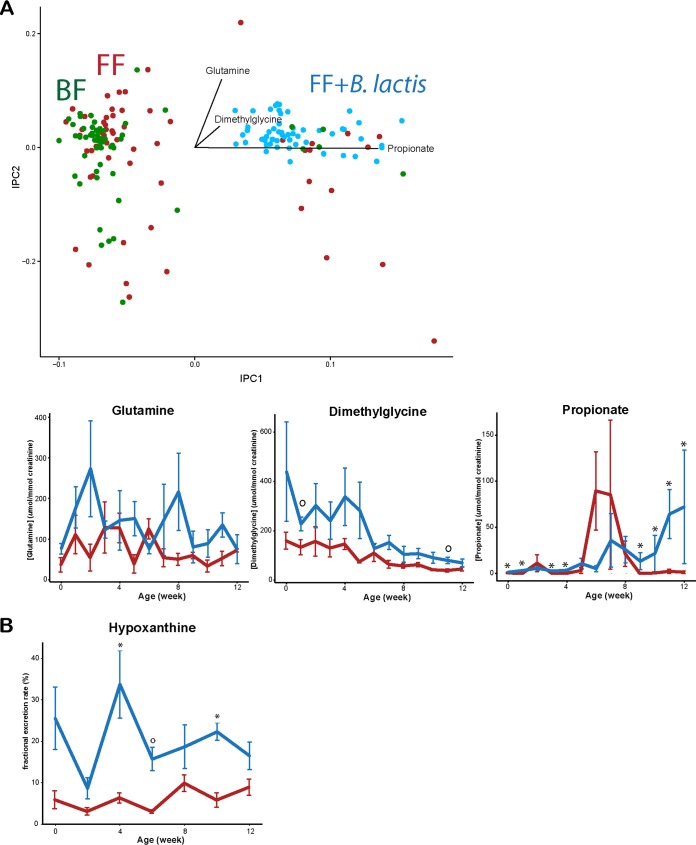FIG 7 .
1H NMR-based urinary metabolomics assessment revealed different profiles between standard formula-fed and B. lactis-supplemented formula-fed rhesus infants. (A) Urinary glutamine, dimethylglycine, and propionate levels were significantly higher in the B. lactis-supplemented group (rmANCOVA without multiple-comparison correction at P = 0.03, P = 0.004, and P = 0.0002, respectively). (B) Fractional excretion rate of hypoxanthine was significantly higher in the B. lactis-supplemented formula-fed rhesus infants (rmANCOVA without multiple-comparison correction, P = 0.001). Fraction excretion of hypoxanthine was defined as [urine hypoxanthine] × [serum creatinine]/[serum hypoxanthine]/[urine creatinine]. Differences at specific time points were determined using independent-sample t tests and are indicated as * (P < 0.05 after FDR adjustment) and ○ (P < 0.05 before FDR adjustment). Data are presented as means ± SEM.

